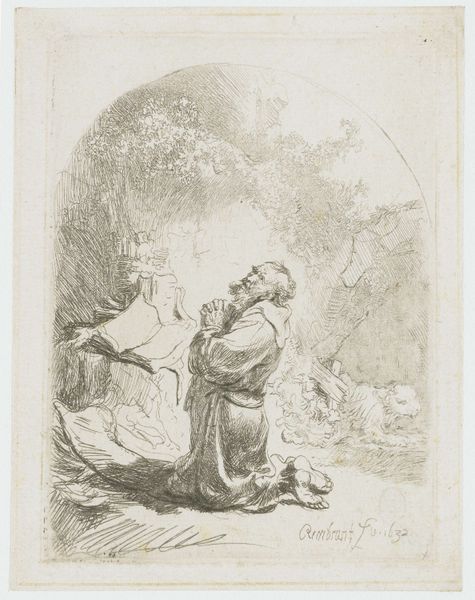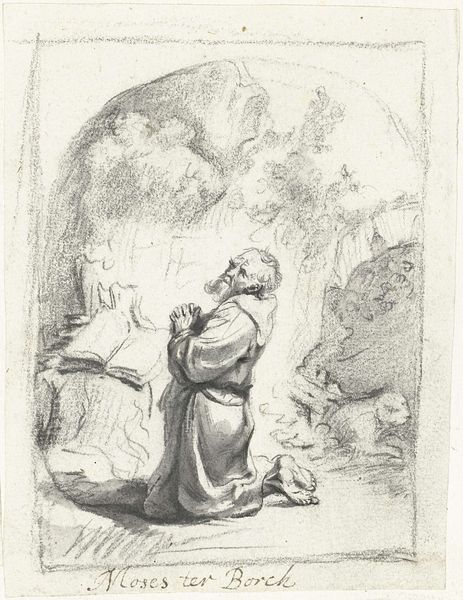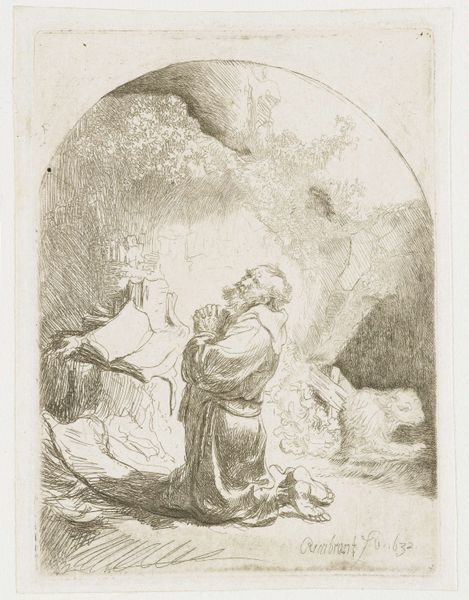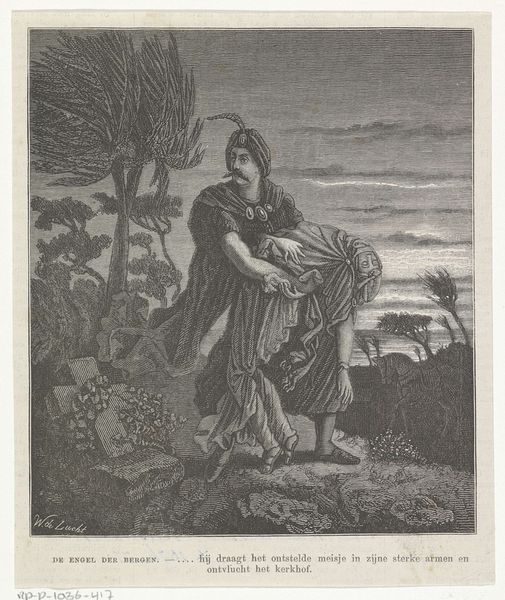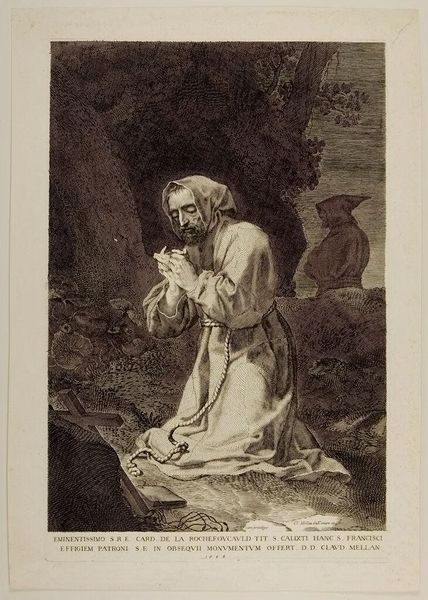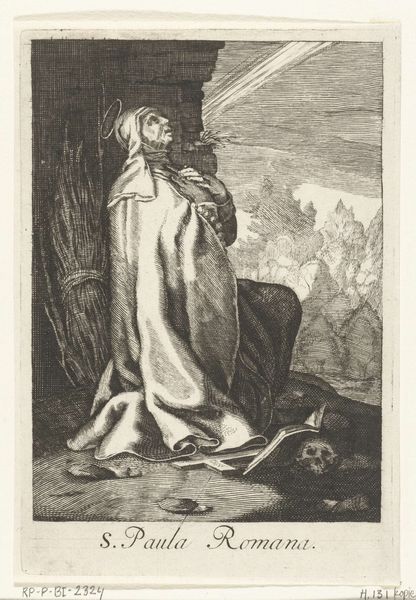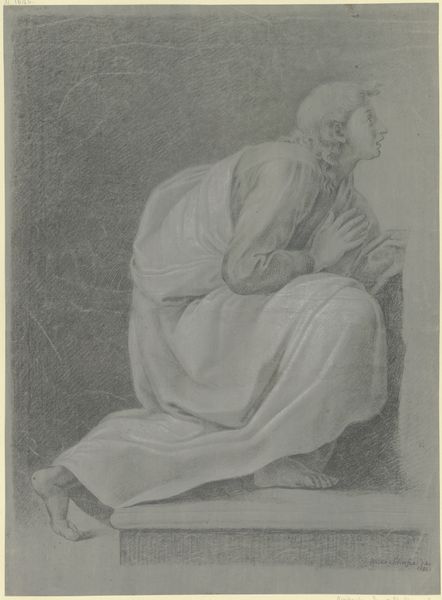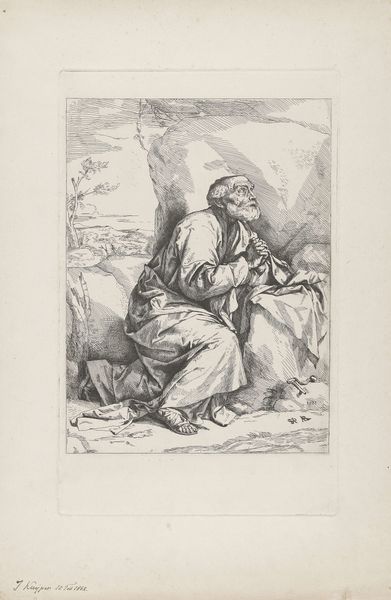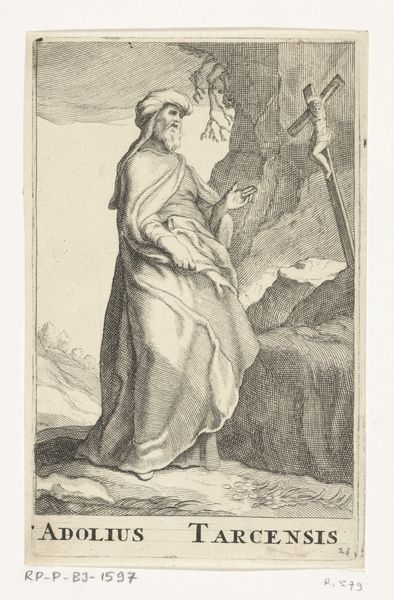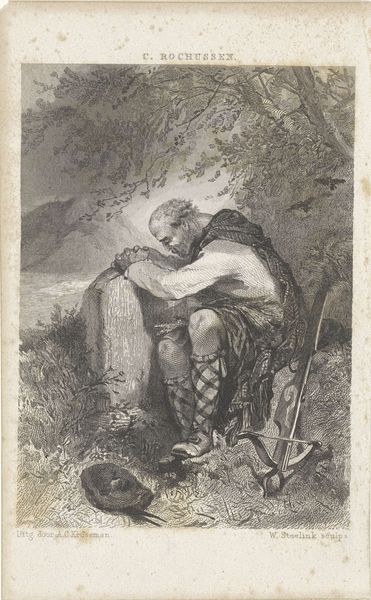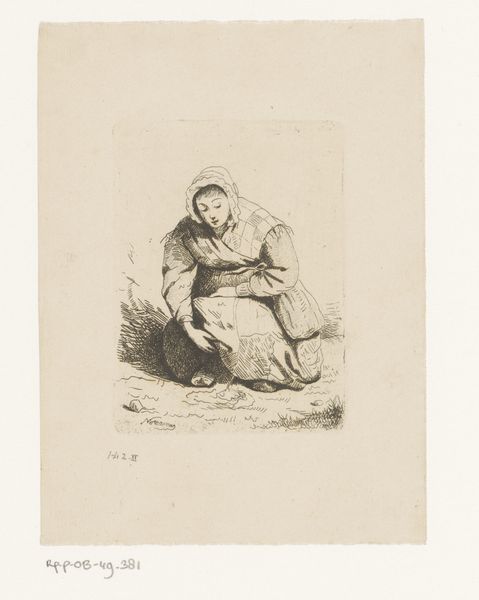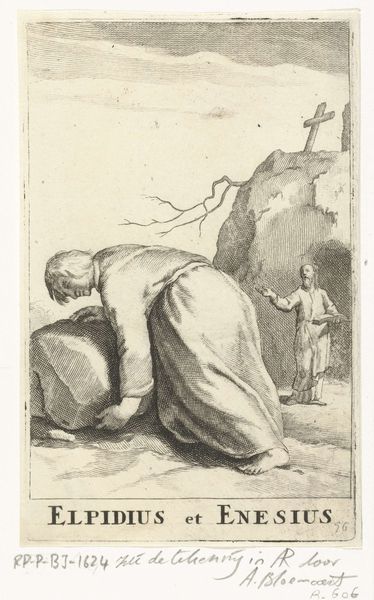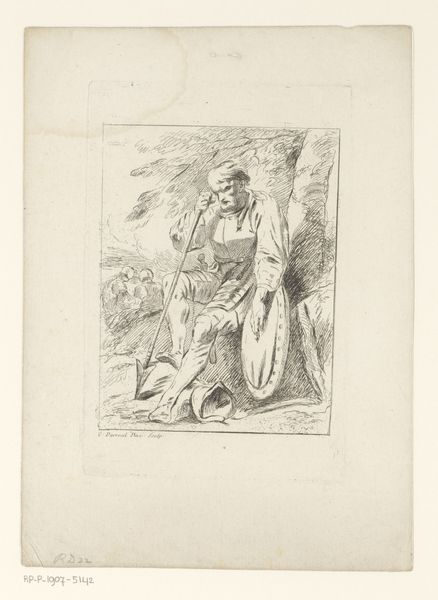
print, etching
# print
#
etching
#
landscape
#
figuration
#
genre-painting
Dimensions: height 241 mm, width 209 mm
Copyright: Rijks Museum: Open Domain
Curator: This etching, "Jonge herderin zittend bij boom," or "Young Shepherdess Sitting by a Tree," is attributed to A. Dickhof and likely dates from 1860 to 1866. What's your immediate response to this print? Editor: Melancholy. The way she’s slumped over that book, propped against the tree... it conveys such a potent sense of weariness. The diagonal lines that constitute the work add to this mood. Curator: I see that. And I think that comes, in part, from considering the social context of this pastoral scene. We often romanticize this idea of rural life, but an etching like this offers the view into the often mundane work of it. The material reality of a young woman's labor. Editor: Yes, the texture of her clothing, the ruggedness of the landscape rendered through the artist’s choice of line weights; all those elements point to the physical demands of her station. The etching's black and white contrast lends a sense of starkness. Curator: Exactly. The artist made use of etching, a printmaking technique using a metal plate covered with a waxy ground. The artist scratches into the ground to expose the metal, and then it is immersed in acid. The acid bites into the exposed metal, creating lines that hold ink when printed. Editor: So the tools themselves contribute to the narrative. We're meant to focus on the lines to understand the shepherdess’ story. Curator: Absolutely, and by foregrounding this particular figure in this genre-painting the artist makes commentary on how figures interact in the context of nature. Editor: I wonder what she’s reading. Curator: Perhaps we’re meant to speculate? Regardless, what lingers with me is how this seemingly simple scene complicates notions of rural idyll by emphasizing the materiality of everyday labor. Editor: And for me, it's how Dickhof manages to create such depth of emotion with such a relatively spare composition and simple means. It speaks to the power of formal arrangement in storytelling.
Comments
No comments
Be the first to comment and join the conversation on the ultimate creative platform.
